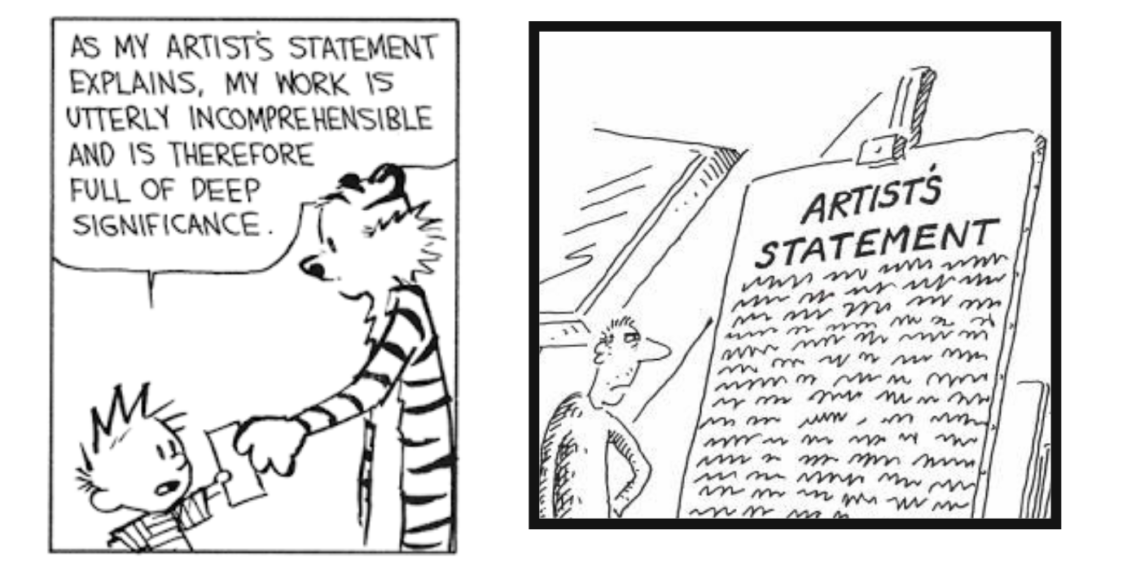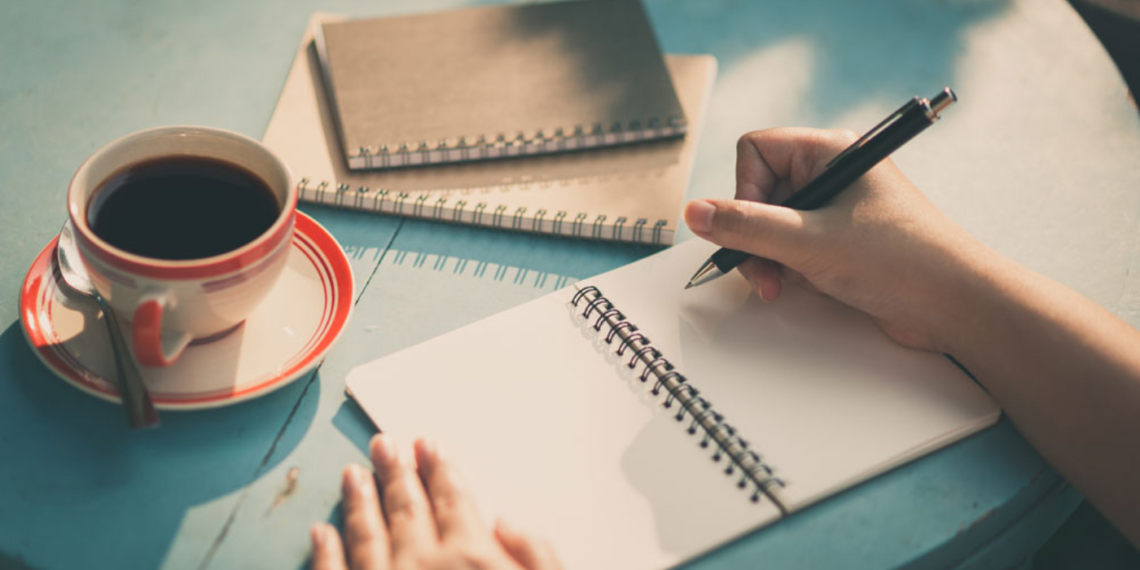As an artist, your work speaks for itself. However, in order to truly connect with your audience, it’s important to have an artist statement that encapsulates your creative vision and provides context for your pieces. An artist statement is a brief written summary of your artwork, its themes, and the creative process that went into making it. In this article, we’ll explore why their statements are important and offer tips on how to create an effective one.
What is an Artist Statement?

An artist statement is a written description of an artist’s work, including their artistic vision, process, and influences. It is a way for artists to communicate their ideas and intentions to viewers and curators. Artist statements are often used in applications for grants, exhibitions, and residency programs.
Artistic expression is the use of art to convey meaning, emotion, or ideas. It can take many different forms, including painting, sculpture, music, dance, and literature. Artistic expression is often personal and subjective, reflecting the artist’s own unique perspective on the world.
In the context of an artist statement, artistic expression refers to the artist’s personal approach to making art. It includes the artist’s choice of materials, techniques, and themes. It also includes the artist’s unique perspective on the world and their desire to communicate something through their work.
Overall, an artist statement is an important tool for artists to communicate their ideas and intentions to viewers and curators. It is a way for artists to share their unique perspective on the world and to connect with others through their art.
Why are Artist Statements Important?
An artist statement serves as a bridge between the artist and their audience. It’s an opportunity to convey the story behind your work and to connect with your viewers on a deeper level. By sharing your inspiration, techniques, and creative process, you give your audience a more comprehensive understanding of your art, and help them appreciate it in a more meaningful way.
An artist statement can also serve practical purposes, such as being included in exhibition catalogues or on your website. It can help gallery owners, curators, and collectors understand your art, and decide whether or not to feature it in their collections. Having a well-crafted artist statement can also help you stand out in the competitive art world, and make a lasting impression on potential buyers.
What is a Good Artist Statement?
A good artist statement is one that is clear, concise, and personal. It should communicate the artist’s artistic vision, process, and influences in a way that is both informative and engaging.
Here are some tips for writing a good artist statement:
- Be specific. Avoid vague language and generalizations. Instead, focus on providing specific examples of your work and your process.
- Be personal. Share your own unique perspective on art and your own artistic journey.
- Be passionate. Let your enthusiasm for your work shine through in your statement.
- Be concise. Aim to keep your statement to one page or less.
- Get feedback. Once you have a draft of your statement, ask other artists, curators, or writers to read it and give you feedback.
A good artist statement should also be tailored to the specific audience that you are writing for. If you are writing for potential curators or collectors, you may want to focus more on your artistic process and influences. If you are writing for viewers, you may want to focus more on the meaning and intent behind your work.
Tips for Writing an Effective Artist Statement

Start with a Hook
Your artist statement should begin with an attention-grabbing sentence or two that draw the reader in. This could be a bold statement about your creative vision, or a question that sparks curiosity. The goal is to make your statement memorable and encourage the reader to keep reading.
Be Authentic
Your artist statement should reflect your unique voice and perspective. Don’t try to write what you think people want to hear, or mimic the style of other artists. Be true to yourself, and convey your personal story in a way that feels genuine and heartfelt.
Keep it Concise
An artist statement should be brief and to the point. Aim for no more than 250-300 words, and avoid using technical jargon or obscure language. Your statement should be accessible to a wide range of viewers, and easy to understand.
Discuss your Inspiration
Describe what inspires you as an artist, and how that inspiration translates into your work. This could be anything from personal experiences to cultural influences. Discussing your inspiration will give your audience a deeper understanding of your art and help them connect with it on a more personal level.
Explain your Creative Process
Detail the steps you take to create your art, from conception to execution. This could include your choice of materials, techniques, and tools. Giving insight into your creative process will help your audience appreciate your art even more, and demonstrate your dedication to your craft.
Share your Vision
Your artist statement should also include your artistic goals and aspirations. What do you hope to achieve through your art? What themes or ideas do you explore? Sharing your vision will help your audience understand the deeper meaning behind your work, and appreciate the value of your art.
Proofread and Edit
Before submitting your artist statement, make sure to proofread it for any grammatical errors or typos. Ask a friend or colleague to read it over as well, and provide feedback. It’s important that your statement is clear, concise, and error-free.
Additional Tips for Writing an Effective Artist Statement
Consider your Audience
Think about who will be reading your artist statement and tailor your language and tone accordingly. If you’re writing for a general audience, avoid using technical jargon or academic language that may be unfamiliar to non-artists. On the other hand, if you’re writing for a more specialized audience, such as curators or fellow artists, you may need to use more specific terminology.
Use Concrete Examples
One effective way to convey your creative process and artistic vision is to provide concrete examples of your work. Instead of describing your style or approach in abstract terms, show your audience what you mean by including specific examples of your art that illustrate your points.
Update Your Artist Statement Regularly
As your art evolves and your career progresses, your artist statement may need to be updated to reflect these changes. It’s a good idea to revisit and revise your statement every year or so, to ensure that it accurately represents your current work and goals.
Effective Artist Statements Examples
To further illustrate how to write an effective artist statement, here are two examples:
Example 1:
“My art explores the tension between the natural and the artificial, and the ways in which human intervention can disrupt the delicate balance of the environment. I use a variety of media, including photography, sculpture, and installation, to create works that challenge our assumptions about the world around us.
My inspiration comes from the landscapes and ecosystems that surround us, and the impact that human activity has on these fragile ecosystems. I am fascinated by the interplay between natural forms and man-made structures, and the ways in which these elements interact with each other.
In my creative process, I strive to use sustainable materials and techniques, and to minimize my impact on the environment. By doing so, I hope to raise awareness of the need for greater environmental stewardship, and to inspire others to take action to protect our planet.
Ultimately, my goal as an artist is to create works that challenge our assumptions and spark conversations about the pressing issues of our time. I hope that my art can serve as a catalyst for change, and help us to envision a more sustainable and equitable future.”
Example 2:
“My art is a reflection of my personal journey, and the struggles and triumphs that have shaped my life. Through my paintings and drawings, I explore themes of identity, memory, and the human experience.
My inspiration comes from my own life story, as well as the stories of others who have faced adversity and come out stronger on the other side. I am drawn to the beauty and complexity of the human form, and the emotions that we all experience in our daily lives.
In my creative process, I often work with mixed media, combining acrylics, charcoal, and other materials to create rich textures and layers. I use colour and composition to evoke mood and emotion, and to create a sense of depth and movement within the piece.
My goal as an artist is to create works that inspire others to embrace their own unique journeys, and to find beauty and strength in the face of adversity. I believe that art has the power to heal and transform, and I hope that my work can serve as a source of comfort and inspiration to those who view it.”
By reading through these examples, you can see how each of them has crafted a statement that reflects their unique perspective and creative vision. They have each included elements such as inspiration, creative process, and vision, while also tailoring their language and tone to their audience. The result is a statement that is clear, concise, and compelling, and that helps to connect the viewer to their work in a deeper way.
Conclusion
In the ever-evolving world of artistry, an artist statement serves as a powerful tool for articulating your creative journey and shaping your artistic expression. As of 2023, the importance of a well-crafted artist statement continues to grow, connecting artists with their audiences on a profound level. This document is your invitation to share the depths of your artistic soul, offering a glimpse into the creative process that fuels your work.
With an effective artist statement, you not only define your artistic identity but also create a bridge between your work and those who engage with it. By mastering the art of writing an artist statement, you empower yourself to navigate the art world with confidence, letting your artistic expression shine through every brushstroke, sculpture, or performance.
Crafting an effective artist statement is an important part of presenting yourself as an artist and connecting with your audience. By following these tips, you can create a statement that reflects your unique voice, provides context for your work, and helps you stand out in the competitive art world. Remember to be authentic, concise, and clear in your writing, and to consider your audience as you craft your statement. With a well-crafted artist statement, you can help your audience connect with your art on a deeper level, and inspire others to appreciate the value of your work.







